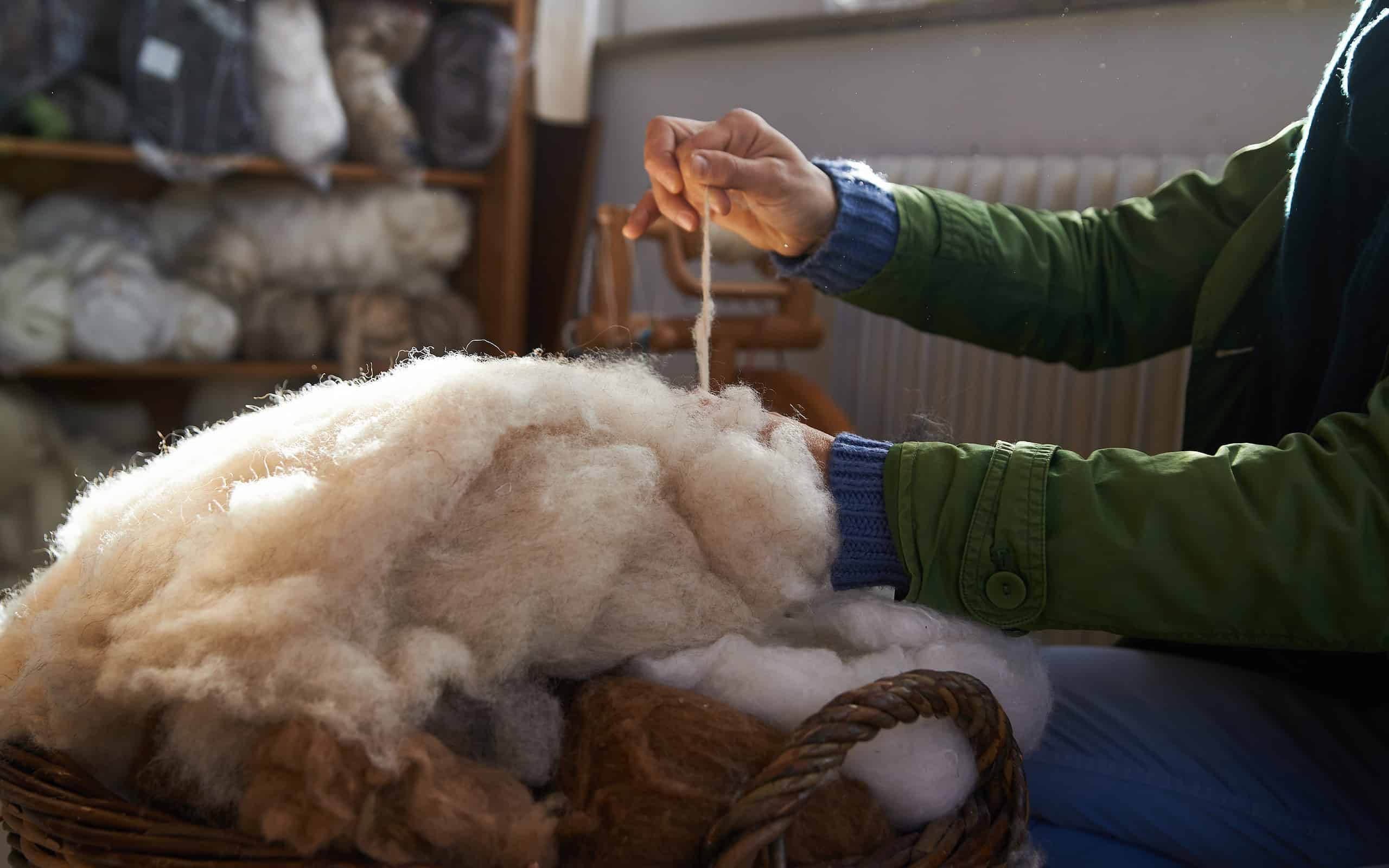The Wool Wire | January 11, 2024
Questioning world lists, getting cranky about socks, preserving a legacy on the Navajo reservation, and understanding wool's Big Three.

News snippets from the wool world
This email is a day late because of the storms that clobbered not only Maine but many other states across the country. Wherever you are, I hope you're safe and sound now.
🐑 Foundation Flockers: Coming next week, join me in the Community on Wednesday January 17th at 7pm Eastern for our discussion of Helen Rebanks' book, The Farmer's Wife. Also coming next week, a fun new way to test your wool smarts with quizzes! (We're always welcoming newcomers, so please do join the flock.) 🐑
Our first rabbit hole this week was sparked by an article that lists the top 10 countries that produce the most wool. Something didn't seem quite right, so I started digging. As I did, things began to unravel in a most fascinating way. Moral of the story: Take lists at face value.
We also get cranky about socks, learn about the state of sheep and shepherding on the Navajo reservation, and take a closer look at the world's "Big Three" wool clothing companies.
Let's go!
On the joyful complexity of lists
We live in a world of rankings and lists, and the wool world is no exception. The following article offers a fun, easy introduction to the notion of sheep living in different parts of the world—highlighting the 10 countries that produce the most wool. It also explores the different traditions that back them up.

Hang on, though! Aren't there different kinds of sheep, each producing a different quality of wool, while other sheep don't produce any wool at all? Yes. So let's keep digging.
The world's wool production is classified in two ways: "greasy" and "clean" weight. Depending on the quality of the wool and of the growing conditions, a country that scores lower for greasy weight could actually come ahead on the clean side, and vice-versa. Which is exactly how things fall right now, with China and Australia duking it out for the two top spots. China pulls ahead for greasy weight, and Australia for clean weight.
But wool and sheep numbers should be the same, right?
Not at all.
If you pull wool out of the equation and just count the countries with the most sheep, China comes back to the lead position, followed by India, Australia, and Sudan—the latter of which doesn't even show up in the top 10 wool producers worldwide, greasy or otherwise. Not everybody relies on sheep for their wool.
Where does the United States fall in all this? We don't even reach the top 40 for sheep population. In terms of greasy wool production, we sit right between France and Kyrgyzstan at number 30. We rank 28th for clean wool production, between Germany and Iraq.
Which is to say...We live in a world of no easy answers. So when you see a list, have fun and start digging.
My latest Wool Short is up on TWC's YouTube channel. It's all about a new study that links our cognitive performance to the fibers we wear. Subscribe and I'll you in the next video.
Getting cranky about socks
Any knitter who has ever made a pair of socks knows how much time they take. To produce them on a mass scale today, we need machines.
And before we had the super fast, computerized equipment of today, we had hand-cranked sock "machines." Take a moment and appreciate the time and energy (and ingenuity) that went into cranking out those socks.
By the way, the socks that Bonnie is knitting in this video are being made for Full Circle Wool. They're made from undyed, 100% climate-beneficial wool, and you'll find them on the Full Circle Wool website.
And if you're ok with something that's not 100% wool, Mitchell Wool offers socks made from 90% American wool, 7% tencel, and 3% nylon—with each pair of socks funding two bales of hay for the flock. Seems like a decent trade.
Keeping the tradition of sheep alive on the Navajo reservation
These next two stories came out in quick succession. The first piece opens at the Miss Navajo contest and shows how contestants must be prepared not only to speak on the importance of sheep to Navajo culture but also to butcher that sheep skillfully.
(Note: This article has fairly graphic photos of the slaughter process.)
Unfortunately, the combination of climate change, grazing permit issues, and a diminished interest among younger generations is leading to fewer sheep being raised on the Navajo reservation.
Our next article dovetails perfectly with this. It profiles one Diné shepherd and weaver Nikyle Begay—who goes by the moniker Navajo Shepherd on Instagram—is working to preserve the legacy.
I especially loved the description of how Begay shears their flock.
"Now 34, Begay has 15 sheep. When it’s time for shearing, they tie their hooves into place and cut the wool by hand with a special pair of scissors. The sheep lies down, calm, as Begay pulls up a section and snips deftly with even strokes. If the sheep gets startled, they soothe them with a soft word or touch. Begay knows each sheep by shades of brown or white, by their horns and by their personalities—assertive, quiet and occasionally sassy or mean."
If you're on Instagram and don't already follow Begay, I highly recommend you do.
Sneaking into the Big Three
This article is a helpful backgrounder on the trifecta of Merino brands that have risen to dominate the outdoor clothing market today (those being Ibex, Smartwool, and Icebreaker). It also has insight into what these companies have been doing lately, and why.

On that note, I'll let you get back to your day.
Thank you as always for your readership and your support!
Until next time,
Clara






